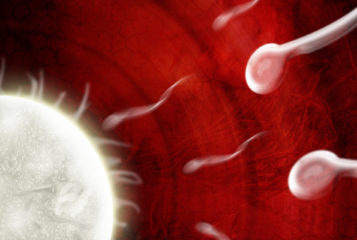The UK's Human Fertilisation and Embryology Authority (HFEA) has launched a public consultation on the welfare of children conceived using assisted conception techniques. The 1990 Human Fertilisation and Embryology Act, which governs the provision of fertility treatment, states that before offering treatment, doctors must take account of the welfare of any child who may be born. The consultation, entitled 'Tomorrow's Children', will focus on the kinds of enquiries to be made of prospective parents, what factors should be taken into account in the assessment process, and whether patients undergoing different treatments need different forms of assessment and information.
The consultation is the first major review of the guidance on Welfare of the Child, as set out in the HFEA's first Code of Practice in 1991. Amongst the options given to demonstrate the different approaches that could be taken in Welfare of the Child assessments, the consultation includes the proposal that doctors only have to consider medical factors that might affect the future child. Another option is that doctors should also consider social and psychological factors, such as 'the age and health of the prospective parent(s), the stability of the family environment and, where there will be no legal father, the mother's ability to meet the child's needs'.
At present, the HFE Act also states that doctors should also take into account 'the need of that child for a father' when assessing prospective parents. However, the consultation document points out that 'studies carried out over the past decade suggest that children born to lesbian couples compare well with other assisted conception children in terms of emotional, behavioural and gender development'. But Angela McNab, chief executive of the HFEA, said that the child's need for a father is in the statute and so would still be considered, although she added that some of the social factors currently considered during a welfare assessment may change as a result of the consultation.
Other researchers have looked at the welfare of children conceived using donated eggs, sperm or embryos, and found that the development and wellbeing of such children compares favourably to those conceived naturally. The consultation asks whether people seeking treatment using donated gametes or embryos should be assessed differently to those undergoing other forms of fertility treatment. Currently, when assessing parents wanting to use donated eggs, sperm or embryos, the Code of Practice requires clinics to take into account a child's potential need to know about their origins, family attitudes towards the child, the implications of having a known donor and the possibility of disputed fatherhood.
Richard Kennedy, secretary of the British Fertility Society called the current provisions for assessing the welfare of the child 'outdated', and said that the assessment should be part of good medical practice, adding 'we don't need a law over that'. Clare Brown, chief executive of the support group Infertility Network UK, said she hoped the review would produce 'clear guidelines that will both protect the welfare of the child and also respect the dignity of the couples concerned'.
Angela McNab said: 'From speaking to patients and clinics we know that there are some specific areas in the current system where there is scope for improvement'. She added that some clinics find it difficult to get family doctors to respond to the welfare of the child assessment, and that 'some patients feel unfairly treated compared with those who conceive naturally'. The consultation will be open until 7 April 2005, and can be completed via the HFEA's website. The new guidance is expected to be sent to clinics this summer, reports the British Medical Journal.
Sources and References
-
IVF rule on parents may be eased
-
Welfare of the child consultation
-
Consultation launched on test tube baby rules
-
Fertility authority consults on screening prospective parents to ensure children's welfare
-
Shake-up of IVF 'welfare' checks






Leave a Reply
You must be logged in to post a comment.